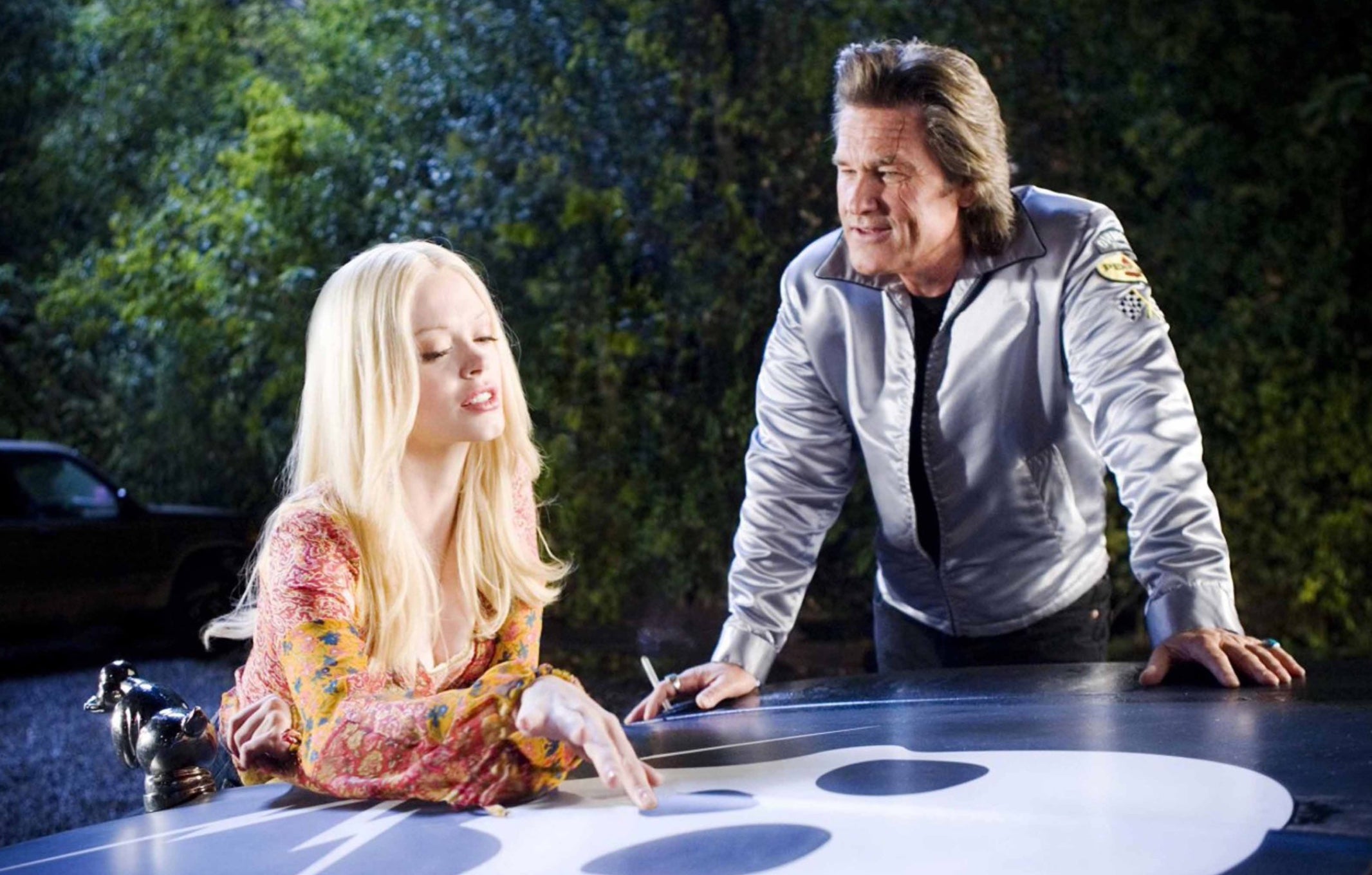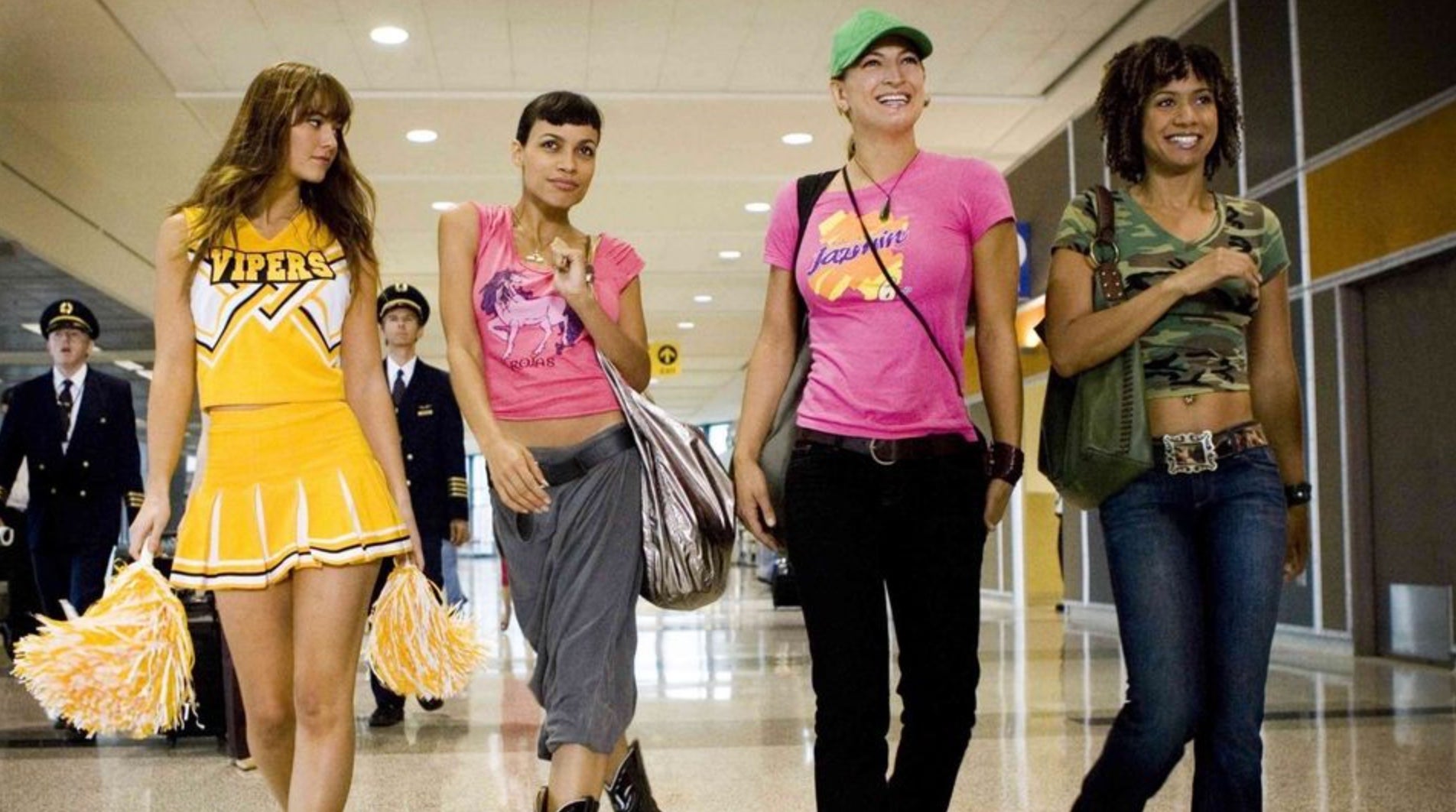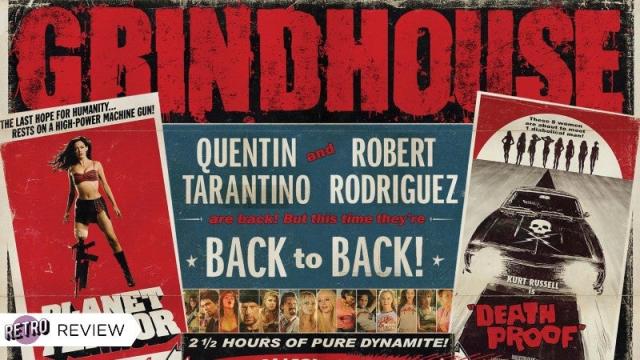It’s impossible to watch Grindhouse the same way today as we did 15 years ago because of two names: Rose McGowan and Harvey Weinstein. In 2017, McGowan, who stars in both halves of the Robert Rodriguez/Quentin Tarantino double feature, accused Weinstein, one of the film’s executive producers, of raping her in 1997, 10 years before the release of Grindhouse. With that knowledge and all its subsequent fallout, watching the actress play both Cherry Darling in Planet Terror and Pam in Death Proof, you can’t help but project some of that fear and pain onto the performance, but in two totally different ways. It doesn’t ruin the innocent intentions of Grindhouse, but it does shine a different light on them.
Grindhouse was released on April 6, 2007 as a three-plus hour theatrical experience comprised of two full-length features, plus fake trailers, ads, and more. It was a bold experiment by two of the boldest filmmakers of the era and, financially, it failed, grossing barely $US26 ($36) million against a budget probably double that. At the time, you got the sense general audiences weren’t sure what they were watching and word of mouth hurt the film.
What audiences were watching was the directors of Desperado and Pulp Fiction attempting to turn modern multiplexes into theatres of the past. Theatres with sticky floors and rips in the screen showing shlocky, gross movies with reels missing and scratches all over the prints. Most audiences just wanted to see a normal movie, and Grindhouse wasn’t that. I, however, loved it and not only saw the film in theatres, but bought the Blu-ray a few years later. Oddly enough though, that Blu-ray remained wrapped in plastic until this week. In 15 years, I never rewatched it. There was just something intimidating about Grindhouse. The length, which seems much more manageable now after a few years of three-hour comic book blockbusters, was one factor. But it was also as if my subconscious memory of the film was too traumatic to go back. So I didn’t. Upon a rewatch, though, I found not just some very valid reasons for that trepidation but a movie that read very differently due to the times.

The first feature of Grindhouse is Planet Terror by Robert Rodriguez. It’s set over a single night when a dangerous toxin is released into the air, turning most of a small Texas town into skin-melting, flesh-eating zombies. The movie is fast-paced, action-packed, and one of the most disgusting films you’ll ever see. Seriously. I forgot just how repulsive Planet Terror is, from its melting testicles to spewing tongue puss, it’s filled with all manner of grossness. I like to think I have a strong stomach, but at times I had to turn my head.
Of course, that’s the point of Planet Terror. It’s supposed to be shocking, disturbing, and also make you laugh. To that end, there are plenty of purposefully cheesy and offensive jokes throughout and they’re delivered by the dozens of prominent characters in the film (played by the likes of Josh Brolin, Freddy Rodriguez, Naveen Andrews, Michael Biehn, Bruce Willis, and others). Any one of which could probably warrant their own article, but at the centre of them all is Cherry Darling (McGowan). Cherry opens the film, performing a sultry go-go dance during the credits, and later loses her leg, which leads to some questionable disability humour. Finally, she fulfils her destiny when she makes her leg into a machine gun and not only saves her friends but starts a revolution. It’s a fun ride, but it’s a lot, and ultimately, 15 years undercuts it from the very first scene.
Beginning with McGowan, scantily clad and dancing provocatively, you understand Rodriguez’s intention, but it hits differently in 2022. The name “Harvey Weinstein” plastered over the dancing instantly creates a mind montage of news stories, interviews, pain, and suffering. As a result, the juxtaposition goes from seductive to counterproductive. Cherry’s overall heroic journey does, eventually, remedy this slightly, but the added weight of history makes the title Planet Terror feel a little too real. As it ended, I was emotionally spent. But Grindhouse was just getting started.

After a few fake trailers (created by Rob Zombie, Edgar Wright, Eli Roth, and more), Grindhouse moves into its second feature, Death Proof by Quentin Tarantino. Death Proof is about a sadistic driver named Stuntman Mike, played by Kurt Russell, who stalks and kills young women with his car. In pure Tarantino fashion though, that reality is obscured for a good chunk of the film by his trademark pulpy, indulgent dialogue, not to mention camerawork focusing on the breasts, butts, and feet of his leading ladies. Which, again, probably could use its own article.
That all changes about 40 minutes into the film when a young woman named Pam (once again played by McGowan) thinks she’s getting a ride home from Mike. Once in the car, Mike reveals his intentions to kill her and does just that by jerking the car around wildly as she sits in a passenger seat without a seatbelt or padding. It’s a brutal scene, made extra brutal today when you imagine the violence McGowan had to endure from Weinstein. It’s hard to forget you’re watching a character being brutalized in a movie paid for by a person who actually brutalized her. A sensation that’s even more gut-wrenching than the opening of Planet Terror.
But here’s where things change. McGowan’s Planet Terror character was highly objectified throughout but ultimately rises above that to become a leader. Pam isn’t objectified, she’s brutally killed. Which, at first, feels egregious. But as Death Proof moves on and Tarantino introduces us to the next group of women Stuntman Mike will target, everything comes full circle. Mike starts to terrorize the second group of women (played by Rosario Dawson, Zoe Bell, and Tracie Thoms) but soon realises he messed with the wrong ladies. They turn the tables, chasing him down with their car. The sequence, film, and entire double feature then end on a long scene of the women beating the absolute shit out of Mike. Like, truly, a brutal beating that ends with Dawson’s character smashing his head open with her shoe in the film’s final image.

At that moment, Grindhouse has triumphed over McGowan’s abuser. Mike is not only humiliated and defeated but he’s also killed. It was then, and only then, that I begin to feel like Grindhouse hadn’t been negatively impacted by the 15 years of history between one of its stars and producers. It was a feeling I felt from the very first frame but, in the very last frame, when Pam’s murderer is dealt satisfying justice, the tables tip the other way.
Having not revisited Grindhouse as a whole in 15 years, I was overwhelmed with just how much there was to say about it. On the surface, yes, it’s 190 minutes of balls-to-the-wall, sometimes literally, madness. But the scripts do an excellent job of balancing shock value and self-awareness, plus the creature work in Planet Terror is completely astonishing, as is the stuntwork in Death Proof. There are also lots of problematic bits sprinkled throughout before you even get to the McGowan characters. However, I’m looking at the film now, in 2022, and it really was the McGowan arc that stood out the most. It made me realise how real-life history can change a film’s implication and perception. It can even take a silly, frivolous experiment like Grindhouse turn it into something more. A type of redemption.
Grindhouse is not streaming anywhere but it’s available on Blu-ray.
